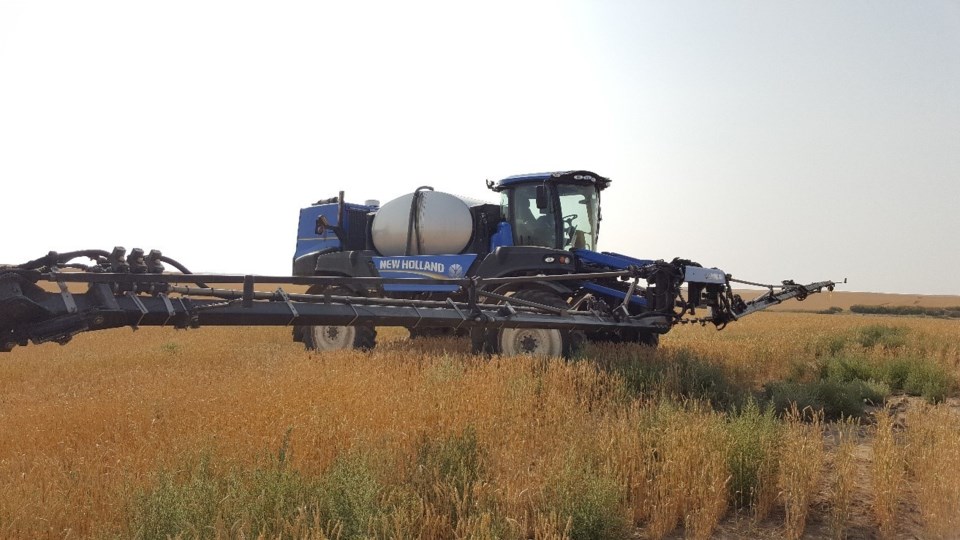Harvest operations have just started in some parts of the province. There have been reports of farmers desiccating pulse crops, with more planning to within the next week or two.
Warm weather this week has continued to help crops progress throughout the province, with most farmers estimating their crops are at their normal development stage.
East-Central Saskatchewan:
Crop District 5 – Melville, Yorkton, Cupar, Kamsack, Foam Lake, Preeceville and Kelvington areas
Crop District 6A – Lumsden, Craik, Watrous and Clavet areas
There was minimal rainfall throughout the province this past week, with no rain in many areas. The Yorkton area received the most rainfall this week with 26 mm. The St. Walburg area has received the most rain in the province since April 1 with 418 mm.
Crops continued to develop rapidly in the east-central region this week due to warm weather. Some farmers reported they may begin desiccating pulse crops soon. There are concerns that hot temperatures have affected crop development and there have been reports of heat blasting and premature ripening in some areas. More moisture would be desired to support seed fill.
Rainfall was very scattered throughout the region, with some areas receiving half an inch to an inch, but many receiving none. The Yorkton area received the highest amount of rainfall this week in the province with 26 mm. The Raymore area received 20 mm, the Pelly area 14 mm, the Esterhazy area 10 mm, the Holdfast area 2.5 mm and the Allan area two mm. The Kuroki area has received the most precipitation in the region since April 1 (263 mm).
Topsoil moisture conditions have continued to deteriorate in the region. Cropland topsoil moisture is rated as 45 per cent adequate, 38 per cent short and 17 per cent very short. Hay and pasture land topsoil moisture is rated as 32 per cent adequate, 45 per cent short and 23 per cent very short. District 6A is reporting that 31 per cent of cropland and 45 per cent of hay and pasture land are very short for topsoil moisture at this time.
Pasture conditions are rated as one per cent excellent, 20 per cent good, 44 per cent fair, 22 per cent poor and 13 per cent very poor. Lack of moisture and heat stress has affected pasture growth and farmers are hoping for more rain. Some farmers have noted concerns of winter feed shortages due to reduced hay yields.
The majority of crop damage this week was due to heat, dry conditions and wind.
Farmers are busy haying, hauling grain and getting ready for harvest.
Overall provincially, with much of the cereals and pulses in the seed filling stages, rain would be welcome in many areas.
Minimal rain and warm temperatures this past week have resulted in a reduction in provincial topsoil moisture. Cropland topsoil moisture is rated as 57 per cent adequate, 33 per cent short and 10 per cent very short. Hay and pasture land topsoil moisture is rated as one per cent surplus, 44 per cent adequate, 36 per cent short and 19 per cent very short.
Warm, dry conditions have resulted in reduced pasture growth in many areas. Provincially, pasture conditions are rated as three per cent excellent, 34 per cent good, 39 per cent fair, 17 per cent poor and seven per cent very poor. The majority of pastures in the west-central and northern regions are rated as fair-to-good condition.
The majority of crop damage this week was due to heat, dry conditions and wind. Many parts of the province had high day and nighttime temperatures and farmers have reported heat blasting in canola and rapid progression through flowering and ripening stages. There was also damage reported by insects such as grasshoppers, bertha armyworms, aphids and diamondback moths, as well as diseases.
Farmers are busy haying, hauling grain and getting ready for harvest.
A complete, printable version of the Crop Report is available online at https://www.saskatchewan.ca/crop-report.
Follow the 2020 Crop Report on Twitter at @SKAgriculture.



